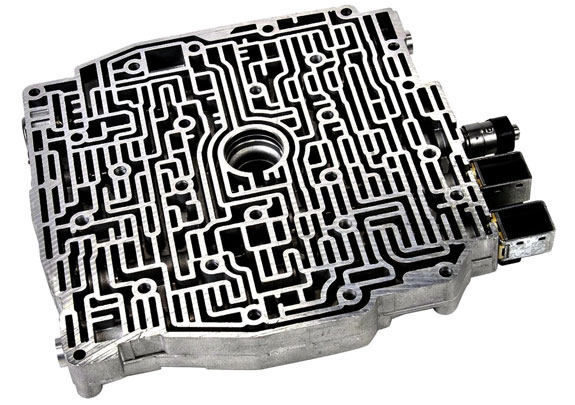 This article will focus on mass air flow sensor, the symptoms of a faulty MAF, how to clean it and many things you need to know about MAF. A mass (air) flow sensor (MAF) measures the mass flow rate of air into a fuel-injected internal combustion engine.
This article will focus on mass air flow sensor, the symptoms of a faulty MAF, how to clean it and many things you need to know about MAF. A mass (air) flow sensor (MAF) measures the mass flow rate of air into a fuel-injected internal combustion engine.
The engine control unit (ECU) needs the air mass information to balance and deliver the correct fuel mass to the engine. Temperature and pressure influence the density of air. Air density changes with ambient temperature, altitude, and the usage of forced induction in automotive applications, hence mass flow sensors are better than volumetric flow sensors for estimating the amount of intake air in each cylinder.
On automobile engines, there are two types of mass airflow sensors in use. The vane meter and the hot wire are these. Neither design makes use of technology that directly gauges air mass. An engine’s ECU, on the other hand, may determine the mass flow rate of intake air using extra sensors and inputs.
Electronic fuel injection (EFI) engines use both systems almost entirely. For most post-on-board diagnostics (OBDII) automobiles, both sensor designs output a 0.0–5.0 volt or a pulse-width modulation (PWM) signal proportionate to the air mass flow rate, and both sensors feature an intake air temperature (IAT) sensor incorporated into their housings. Prior to 1996, vehicles could have MAF without an IAT. The 1994 Infiniti Q45 is a good example.
Read also: What Is A Catalytic Converter?
Symptoms Of A Mass Air Flow Sensor
Below is a list of common symptoms of a bad air flow sensor. If you notice any of these symptoms, kindly take your car to a mechanic for inspection of MAF.
Trouble Accelerating
If you’re experiencing trouble accelerating into traffic or passing, it’s possible that the ECM is limiting injection due to MAF sensor issues.
Rough Idle
Without the right amount of gasoline, a smooth idle is impossible to achieve. The engine may not operate smoothly if the MAF sensor is malfunctioning, especially while idling.
Bad Fuel Economy
The MAF sensor does not have to entirely fail in order to have an impact on fuel economy. If the ECM errs rich, it may add more fuel than is required, resulting in poor fuel economy.
Black Exhaust fumes
In some situations, the ECM may overcorrect to the point where black smoke emerges from the exhaust. This can potentially cause the catalytic converter to overheat.
Hard Starting Of Car
Engine starting requires more gasoline than idle, but if the MAF sensor signal is skewed, the ECM may not demand adequate fuel injection to start the engine immediately away.
Click Here To Get Quality Mass Air Flow Sensor On Amazon
How To Clean A Faulty Mass Air Flow Sensor
Generally speaking, you should clean your mass airflow sensor every six months or whenever you replace your oil. Cleaning it at the same time as you change or clean your air filter will save you time and money.
Remove the Sensor
To clean your mass airflow sensor, you must first remove it. This is accomplished by opening your vehicle’s air box and removing it with a flathead screwdriver. Always avoid touching the wires when removing the sensor. Although you cannot be electrocuted by a disconnected mass airflow sensor, the wires are sensitive and thin. It’s wise to be cautious because breaking one will require a replacement, which may cost upwards of $100.
Clean the Sensor
After then, you have two options. Take your mass airflow sensor and place it in a plastic bag filled with rubbing alcohol for the cheapest alternative. Move the bag around to ensure that the alcohol washes away all of the dirt and filth from the sensor. Another method is to go to your local auto parts store and get a special mass airflow sensor cleaning to spray on your sensor, although this is more expensive, as previously indicated.
Dry and Reinstall the Sensor
Allow for 20 minutes or longer after cleaning your mass airflow sensor with either the cleaner or rubbing alcohol. You must completely dry the sensor before reinstalling it in your vehicle; otherwise, you risk damaging it. That’s all there is to it.
Mass Air Flow Sensor Replacement
A mass air flow sensor can cost anything from $80 to $380 to replace. The cost of the part alone ranges from $30 to $300 for typical aftermarket mass air flow sensors at the lower end of the range, while higher quality or more sophisticated OEM sensors are more expensive. If you hire a professional to replace it, you may expect to pay between $50 and $80 in labor.
The MAF sensor is normally positioned in an easy-to-reach area on top of the engine, so it’s not a difficult chore to do yourself. It shouldn’t take you more than a few minutes to change it if you have even the most basic mechanic skill.
If you’re not sure what you’re doing or want to make sure you’re getting the right component, take your car to a skilled technician and have them do it for you. In any case, the most expensive portion will be the cost of the part.
Without a completely effective mass air flow sensor, you won’t be able to last long. Your ability to handle your vehicle effectively will be harmed.
It is preferable to replace the sensor as soon as possible before the condition worsens. Even more crucial, you should do so before your engine is irreparably damaged.
Can You drive with a bad MAF?
You can drive your car with a defective mass air flow sensor for a short time, but it is not suggested to do so for an extended period of time, even if your car is still running. This is because ignoring your car’s MAF sensor problem can lead to a more serious engine problem.
How does MAF work?
Simply put, a MAF is made up of two sensing wires. The one is heated by electricity, whereas the other is not. The heated wire cools as air passes across it. The MAF sensor automatically raises or decreases the current to the heated wire when the temperature differential between the two sensing wires varies.
What makes MAF go bad?
Contamination is a major cause of MAF sensor failure and replacement. The parts of the sensor become contaminated and fail as air, dirt, and other debris enter the sensor. Sluggish performance, rough idling, weak acceleration, or even stalling are all common complaints among drivers.
Will car run if I disconnect MAF?
If you unplug the mass airflow sensor, the automobile should continue to operate and start normally. This implies that if your mass airflow sensor fails totally, your car will continue to run, and, shockingly, it may even run better without it.
How long does MAF last?
When it comes to mass air flow sensors, how long do they last? Regular air filter maintenance and replacement can help to extend the life of your MAF sensor and ensure that it continues to function properly. Although the actual time depends on the location and length of the trip, a fair rule of thumb is 10,000 to 12,000 miles.
Can I clean my car MAF?
Every time you change your air filter, we recommend cleaning your MAF sensor. It’s simple to perform; simply spray 10 to 15 spurts of mass air flower cleaner onto the wire or plate. If you scrape the pieces, you risk breaking the wire or damaging the plate.
Click Here To Get Quality Mass Air Flow Sensor On Amazon









